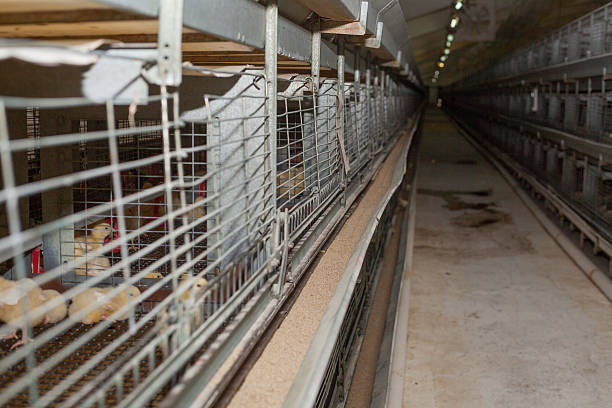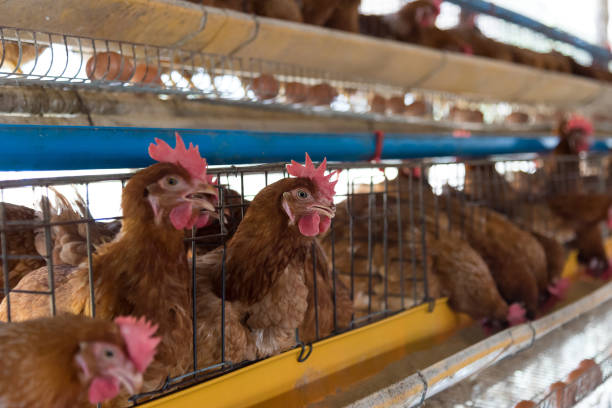H-Type Layer Cage Systems: What Factors Impact the Cost for African Businesses?
H-Type Layer Cage Systems: What Factors Impact the Cost for African Businesses?
For African businesses looking to dive into the egg production industry, the H-type layer cage system presents a compelling solution. Offering enhanced space utilization, improved management, and better egg collection efficiency compared to traditional methods, it’s no wonder why these systems are gaining popularity. However, understanding the factors influencing the cost of H-type layer cage systems is crucial for making informed investment decisions. Let’s break down the key elements that impact the overall expenses for African poultry entrepreneurs.
The Core Components of H-Type Layer Cage Systems and Their Costs
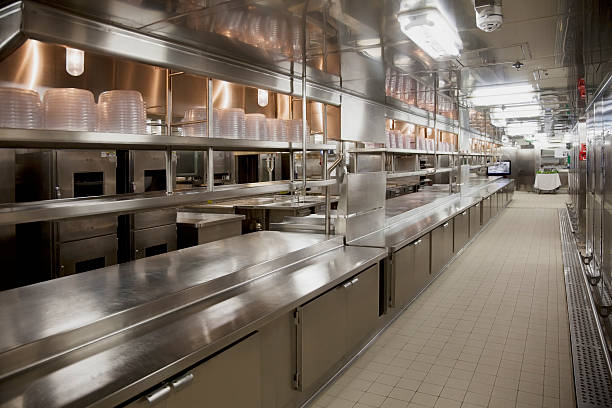
Before diving into the influencing factors, it’s important to understand what makes up the system and how these components contribute to the overall cost. H-type layer cage systems are more than just cages; they are comprehensive solutions designed to optimize egg production.
The Cage Structure: This is the backbone of the entire system. It’s made of galvanized steel wire mesh, sometimes coated for protection against corrosion, and forms the tiered structure that houses the chickens. The cage structure’s cost depends on the quality of materials, the number of tiers, the size of each cage, and the overall capacity of the system. Higher-quality materials, like heavily galvanized or coated steel, will increase the initial investment but offer superior durability and longevity.
Automated Feeding System: This component streamlines the feeding process, delivering feed to each tier of cages automatically. The feeding system usually includes feed hoppers, distribution mechanisms (like chain feeders or traveling hoppers), and motors. The complexity and automation level of the feeding system will significantly impact its cost. A simpler, manually controlled system will be cheaper upfront, but a fully automated system saves on labor costs and ensures consistent feed distribution, potentially increasing egg production.
Automated Drinking System: Supplying fresh, clean water to the chickens is vital to their health and egg production. The drinking system consists of water lines, nipples or cups, a water source, and often a medication system. The cost depends on the materials used for the water lines (PVC or stainless steel), the type of drinkers (nipple drinkers are generally more hygienic), and the inclusion of a water filtration or medication system.
Egg Collection System: This system automates the process of collecting eggs, reducing labor and minimizing egg breakage. It typically involves egg belts that run along each tier of cages, collecting the eggs and transporting them to a central collection point. The cost hinges on the type of collection system (manual vs. automatic), the quality of the belts, and the efficiency of the egg handling mechanism. Automatic systems are obviously more expensive but greatly reduce labor and loss.
Manure Removal System: Efficient manure removal is crucial for maintaining hygiene and reducing disease risk in the poultry house. The manure removal system can consist of scrapers, belts, or flushing systems that remove manure from under the cages. The cost depends on the complexity of the system (manual vs. automatic), the type of removal mechanism (belt, scraper, or flushing), and the frequency of manure removal.
Ventilation System: Maintaining optimal temperature and air quality inside the poultry house is essential for the health and productivity of the chickens. The ventilation system can include fans, air inlets, and cooling pads, depending on the climate. The cost depends on the size of the poultry house, the climate in the region, and the type of ventilation system (natural or forced). Forced ventilation systems with temperature control are more expensive but offer precise environmental control.
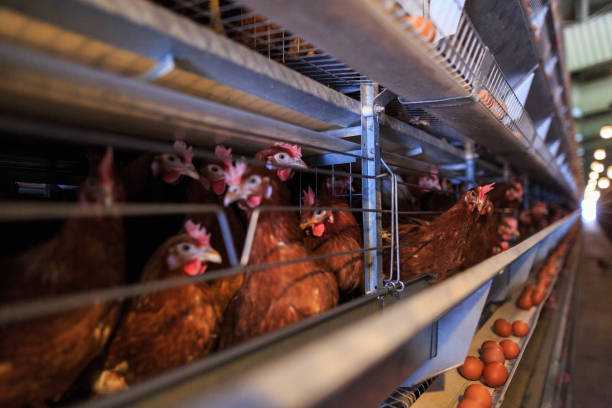
Lighting System: Lighting plays a crucial role in stimulating egg production. The lighting system typically includes LED lights, timers, and dimming controls. The cost depends on the type of lights (LEDs are more energy-efficient), the number of lights, and the sophistication of the control system. Programmable lighting systems that mimic natural daylight cycles can improve egg production.
Control System: Often overlooked, the control system integrates all the automated components, allowing for centralized monitoring and management. This may include sensors, controllers, and software for temperature, humidity, feeding, lighting, and egg collection. A sophisticated control system adds to the upfront cost but optimizes performance and allows for remote monitoring.
Key Factors Affecting the Cost of H-Type Layer Cage Systems in Africa
Now that we understand the components involved, let discuss the factors that directly affect the cost for African businesses.
System Size and Capacity: This is the most obvious factor. A larger system designed to house more chickens will naturally cost more than a smaller system. The initial investment scales directly with the number of cages and the overall capacity of the poultry house. However, economies of scale come into play. The cost per bird tends to decrease as the system size increases because of proportionally fixed costs such as the control system and house building.
Level of Automation: The degree of automation incorporated into the system significantly influences the price. Fully automated systems, with automated feeding, drinking, egg collection, and manure removal, require a higher initial investment but can lead to substantial long-term savings in labor costs. Conversely, semi-automated or manual systems are cheaper upfront but require more manual labor, which translates into higher operational expenses over time. The choice depends on the availability and cost of labor in the specific African region. In some locations, labor might be relatively inexpensive, making a semi-automated system a viable option. In other areas, the high cost of labor or the difficulty in finding reliable workers might justify the investment in a fully automated system.
Material Quality and Durability: The quality of materials used in the construction of the cage system directly impacts its lifespan and durability. Higher-quality materials, such as galvanized steel with a thick zinc coating, offer superior corrosion resistance and can withstand the harsh environmental conditions often found in African climates. While these materials come with a higher price tag, they result in lower maintenance costs and a longer lifespan, translating into long-term savings. Opting for cheaper, lower-quality materials may seem attractive initially but can lead to frequent repairs, replacements, and ultimately, a higher total cost of ownership.
Supplier and Origin: The choice of supplier and the origin of the cage system plays a critical role in determining the cost. Systems sourced from reputable international manufacturers known for quality and reliability might be more expensive upfront but offer better performance, durability, and after-sales support. Locally manufactured systems might be cheaper initially but could be of lower quality and lack the necessary certifications or warranties. Furthermore, importing cage systems from overseas can incur additional costs such as shipping, import duties, and taxes, which must be factored into the total cost. The supplier’s reputation for providing quality after-sales service, including spare parts and technical assistance, is a significant factor to consider.
Customization and Features: The degree of customization required for the cage system can influence the final cost. Standardized systems are generally cheaper than customized systems that are tailored to specific needs or preferences. If the poultry house has unique dimensions or if the farmer needs specific features, such as specialized feeding systems or climate control options, the cost will increase. Customization can be beneficial in optimizing the system for the specific environment and management practices, but it is necessary to weigh the benefits against the additional costs.
Installation Costs: The cost of installing the H-type layer cage system is often overlooked but can significantly impact the overall investment. Installation costs vary depending on the complexity of the system, the location of the poultry house, and the availability of skilled labor. If the installation requires specialized equipment or expertise, the cost will be higher. Some suppliers offer installation services as part of the package. This can provide peace of mind and ensure that the system is installed correctly, but it will definitely add to the total expense.
Transportation Costs: Transportation costs can be substantial, especially for businesses located far from major ports or manufacturing centers. The cost of transporting the cage system from the supplier to the poultry farm depends on the distance, mode of transportation (sea, rail, or road), and fuel prices. It is crucial to obtain accurate transportation quotes from multiple providers and factor these costs into the overall budget. Negotiating with suppliers to include transportation in the purchase price can help reduce logistical complexities and potentially lower costs.
Prevailing Economic Conditions: Broader economic factors within the African country, such as inflation, exchange rates, and interest rates, can influence the cost of the H-type layer cage system. Inflation can increase the price of raw materials and manufacturing costs, while fluctuations in exchange rates can affect the cost of imported components. Interest rates influence the cost of financing the investment. Monitoring these economic indicators and carefully planning the timing of the investment is essential.
Government Regulations and Incentives: Government regulations and incentives can have a notable impact on the affordability of H-type layer cage systems. Governments may offer subsidies, tax breaks, or grants to encourage investment in modern poultry farming technologies. Conversely, regulations related to environmental protection or animal welfare can increase the cost of compliance, for example, manure management regulations influence the choice of manure removal systems. It is important for businesses to stay informed about relevant government policies and incentives and factor them into their investment decisions.
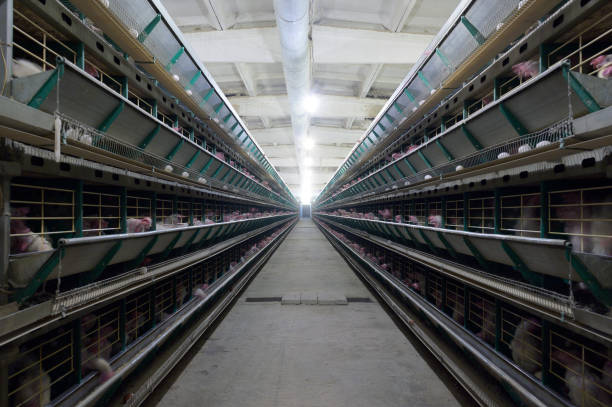
Mitigating Costs and Maximizing Value
Identifying cost-saving strategies is critical for African businesses venturing into H-type layer cage systems.
Conduct Thorough Research: Before making any decisions, conduct extensive research on different suppliers. Compare prices, quality, and features of different systems. Read online reviews and consult with other poultry farmers to gather insights. Evaluate the long-term costs and benefits of different options carefully.
Explore Financing Options: The initial investment in an H-type layer cage system can be substantial. Explore financing options such as loans, leases, or grants to make the investment more manageable. Work closely with financial institutions to secure favorable terms and conditions.
Consider Phased Implementation: For farmers with budget limitations, consider implementing the H-type layer cage system in phases. Start with a smaller system and gradually expand as the business grows. This approach allows for better management of cash flow and mitigates the risk of over-investment.
Invest in Training and Maintenance: Proper training of staff and regular maintenance of the cage system are essential for maximizing its lifespan and performance. Invest in training programs to ensure that employees understand how to operate and maintain the system effectively. Establish a preventive maintenance schedule to identify and address potential problems before they escalate.
Negotiate with Suppliers: Don’t be afraid to negotiate with suppliers to get the best possible price. Ask for discounts, bundled deals, or extended warranties. Building a strong relationship with the supplier can lead to better service and support in the long run.
Optimize Poultry House Design: A well-designed poultry house can improve ventilation, lighting, and biosecurity. Optimize the poultry house design to minimize energy consumption. By making use of natural ventilation and lighting, you can drastically reduce expenses on the poultry farm.
Investing in an H-type layer cage system represents a significant step towards modernizing egg production and increasing efficiency for African businesses. By carefully evaluating the factors that impact the cost and implementing cost-saving strategies, entrepreneurs can make informed decisions, maximize their return on investment, and contribute to the growth of the poultry industry in Africa.




